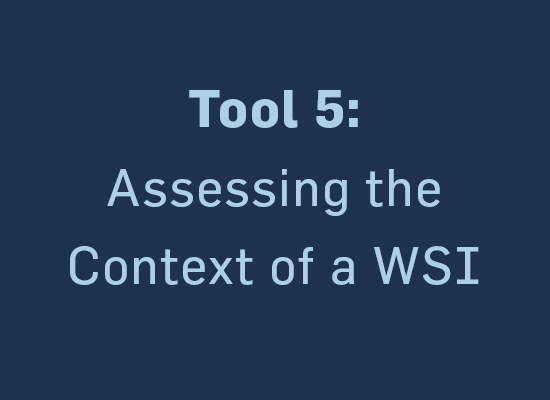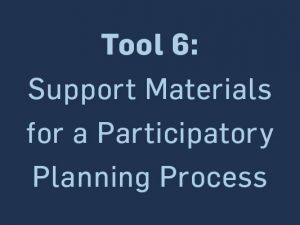| Tool | A guide to design and undertake an analysis of environmental, technological, socio-economic, cultural, market, policy (both institutional and regulatory), and political factors that influence the scope and design of a WSI. A set of key questions to be analyzed for WSIs is provided below. |
| Related Key Activities | Undertake a participatory context analysis. |
| Questions Addressed | How can we best align the objectives of the WSI within the local water context? What are the major water challenges that the WSI can address, what are the opportunities, and how might the WSI be integrated into the existing institutional environment? |
| Purpose | A well designed and implemented context analysis ensures that the WSI can identify and address the local water challenges in a way that serves the public interest, and mitigate potential integrity risks associated with WSIs that serve narrow/private interests:
|
| Possible Users | WSI initiators. |
| Level of Effort | Thorough analysis and data collection efforts depend on existing knowledge and availability of relevant assessments. |
| WSI Phase | Should start the analysis during 1: Incubation and Initial Analysis and be completed during 2: Formalization. |
A context analysis is a structured approach to understanding the root cause(s) of the water-related challenges the WSI aims to address. Rather than be pursued as a stand-alone exercise, it can be integrated into existing water-related assessments, such as a water risk assessment or appraisal, or other mechanisms that look to understand the contextual factors that influence water risks. Where information gaps exist, the participants or conveners can later supplement the assessments with additional areas of inquiry. The insights resulting from a context assessment are key to designing appropriate strategies for the WSI that are based on a logical theory of change, and that respond to local realities and take the interests of different stakeholders into consideration.
For example, site-specific problems may range from water allocation issues or unreliable water supply to damages resulting from flooding or the degradation of the ecosystem. To address such complex issues, WSI participants must understand what is going on and why.





